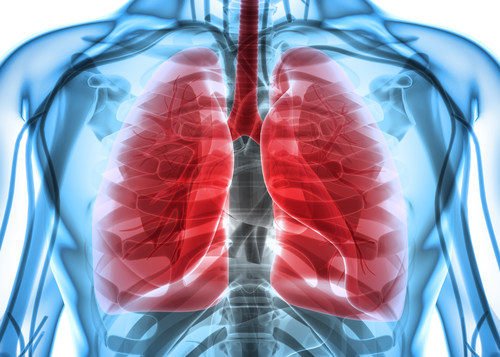There are a variety of lung diseases that may have occupational components. One of these lung diseases is Pneumonitis. If a Worker succumbs to Pneumonitis, and there is an occupational component as to its cause, they would be able to file and pursue a workers’ compensation claim to obtain medical treatment and monetary benefits for their lung condition.
This article will discuss Pneumonitis, how it can be work-related, and a discussion of various caselaw that addressed issues relating to the disease.
What Pneumonitis? Is It the Same as Pneumonia?
Pneumonitis is a medical condition which involves the inflammation of lung tissue.
The medical disease Pneumonia is essentially a subset of Pneumonitis. It is an inflammation of the lungs caused by an infection.
What Are the Symptoms of Pneumonitis?
Symptoms of Pneumonitis can include difficulty breathing and a dry, nonproductive, cough. If the condition progresses to Chronic Pneumonitis, symptoms can also include fatigue, loss of appetite and unintentional weight loss. Mayo Clinic.
Are There Degrees of Pneumonitis?
Yes. There are varying degrees of Pneumonitis. The degrees are Acute, Subacute and Chronic.
Pneumonitis is very serious. If it goes unnoticed or untreated can cause irreversible lung damage.
What Tests and Treatments are there for Pneumonitis?
Pneumonitis is a complex medical condition. Therefore, a thorough evaluation by a specialist is recommended. This specialist will conduct the physical examination and order testing.
The testing with respect to Pneumonitis can include blood tests, bronchoalveolar lavage (BAL), chest x-rays, computed tomography (CT), inhalation challenge tests lung biopsies, lung function tests, and precipitin tests. Mayo Clinic.
How Is Pneumonitis Diagnosed?
Diagnosis of the condition can be complicated. It can take a long time to diagnose. In writing this blog, this matter must be deferred to a specialist without further comment.
The diagnosis of HP in general remains often challenging as there is no gold standard test and the diagnosis is made from a combination of procedures. In addition, the diagnosis of OHP requires ascertaining the work relatedness of the disease with a high level of confidence. A multidisciplinary approach, including clinicians, radiologists, pathologists, and occupational physicians/hygienists, is strongly recommended to improve the diagnosis of OHP, as demonstrated for IPF Quirce S, Vandenplas O, Campo P, Cruz MJ, de Blay F, Koschel D, Moscato G, Pala G, Raulf M, Sastre J, Siracusa A, Tarlo SM, Walusiak-Skorupa J, Cormier Y. Occupational hypersensitivity pneumonitis: an EAACI position paper. Allergy. 2016 Jun;71(6):765-79. doi: 10.1111/all.12866. Epub 2016 Mar 11. PMID: 26913451.
What is Occupational Hypersensitivity Pneumonitis (OHP)?
“Based on the key features of the disease that were outlined by previous authors 4–11 and the EAACI nomenclature for allergic diseases 12, the following consensus definition is proposed: ‘OHP is an immunologic lung disease with variable clinical presentation and outcome resulting from lymphocytic and frequently granulomatous inflammation of the peripheral airways, alveoli, and surrounding interstitial tissue which develops as the result of a non‐IgE‐mediated allergic reaction to a variety of organic or low molecular weight agents that are present in the work environment’. Quirce S, Vandenplas O, Campo P, Cruz MJ, de Blay F, Koschel D, Moscato G, Pala G, Raulf M, Sastre J, Siracusa A, Tarlo SM, Walusiak-Skorupa J, Cormier Y. Occupational hypersensitivity pneumonitis: an EAACI position paper. Allergy. 2016 Jun;71(6):765-79. doi: 10.1111/all.12866. Epub 2016 Mar 11. PMID: 26913451.
What Is the Treatment for the Condition?
Treatment for some medical conditions is not just medical care.
In the case of Pneumonitis, one of the forms of treatment is avoidance of harmful exposure. This can include the removal of causative substances, the replacement of products that have the causative substances, changes in work that will avoid exposures to the causative substances, and avoidance in general of known sources of the causative substances.
Treatments can include corticosteroids or other immunosuppressants. Treatment can include oxygen therapy, bronchodilators, opioids, and lung transplants. Mayo Clinic.
In viewing the range and scope of treatments, it is fair to say that Pneumonitis should be viewed as a serious medical condition.
What Are the Causes of Pneumonitis? What Are Occupational Causes of Pneumonitis?
Common causes of pneumonitis include airborne irritants at your job or from your hobbies. In addition, some types of cancer treatments and dozens of drugs can cause pneumonitis.
With respect to work-related exposure, “A large number of occupational agents/antigens have been described as potential causative agents of HP in a wide variety of occupations. These offending agents can be classified into six broad categories that include bacteria, fungi, animal (glyco) proteins, plant (glyco) proteins, low molecular weight chemicals, and metals (Table 2). Using a quantitative structure–activity relationship (QSAR) model, it was found that chemicals causing OHP tend to have a higher predicted asthma hazard, are more lipophilic, and are more likely to be protein cross‐linkers than those causing occupational asthma .” Quirce S, Vandenplas O, Campo P, Cruz MJ, de Blay F, Koschel D, Moscato G, Pala G, Raulf M, Sastre J, Siracusa A, Tarlo SM, Walusiak-Skorupa J, Cormier Y. Occupational hypersensitivity pneumonitis: an EAACI position paper. Allergy. 2016 Jun;71(6):765-79. doi: 10.1111/all.12866. Epub 2016 Mar 11. PMID: 26913451.
What Types of Occupations That Are At Risk of Pneumonitis?
The following are occupations that may be at risk for the disease: aircraft industry, animal feeding, bagasse workers [slaughterhouse], bird breeders, ceramic workers, cheese workers, chemical and polyurethane industry, compost workers, cork workers, cosmetic industry, dental technicians, farmers, florists, food processors, hard metal workers, humidifiers, laboratory workers, maple bark strippers, malt workers, mushroom workers, painters, paprika slicers, pearl industry, peat moss processors, pharmaceutical industry, plastic industry, plastic workers, potato riddlers, seaweed workers, smelters, stucco workers, textile workers, tobacco growers, wine makers, wood workers, and yacht manufacturing. Quirce S, Vandenplas O, Campo P, Cruz MJ, de Blay F, Koschel D, Moscato G, Pala G, Raulf M, Sastre J, Siracusa A, Tarlo SM, Walusiak-Skorupa J, Cormier Y. Occupational hypersensitivity pneumonitis: an EAACI position paper. Allergy. 2016 Jun;71(6):765-79. doi: 10.1111/all.12866. Epub 2016 Mar 11. PMID: 26913451.
Is There An Alternative Theory of Industrial Causation for Pneumonitis?
Yes. Radiation treatment has been considered as a source of this disease.
Treatment for an industrial injury can give rise to a work injury claim. Thus, if there is a work-related medical condition that involves radiation treatment, they may possibly be able to pursue a claim. This may be the case with cancers such as lung or breast.
Is There Any Caselaw Concerning Pneumonitis?
Yes. There have been a variety of cases with respect to the disease.
The pneumonia presumption for safety and law enforcement officers was found to not apply in the case of pneumonitis. As noted above, pneumonia is a subset of the disease.
Pneumonitis was found work-related for a meat cutter. The WCAB panel determined that the applicant developed compensable hypersensitivity pneumonitis while working as a meat cutter. See Costco Wholesale Corp vs. WCAB (2010) 75 C.C.C. 1187 (writ denied.)
What if I Need Advice?
If you would like a free consultation regarding workers’ compensation, please contact the Law Offices of Edward J. Singer, a Professional Law Corporation. We have been helping people in Central and Southern California deal with their workers’ compensation cases for 27 years. Contact us today for more information.




